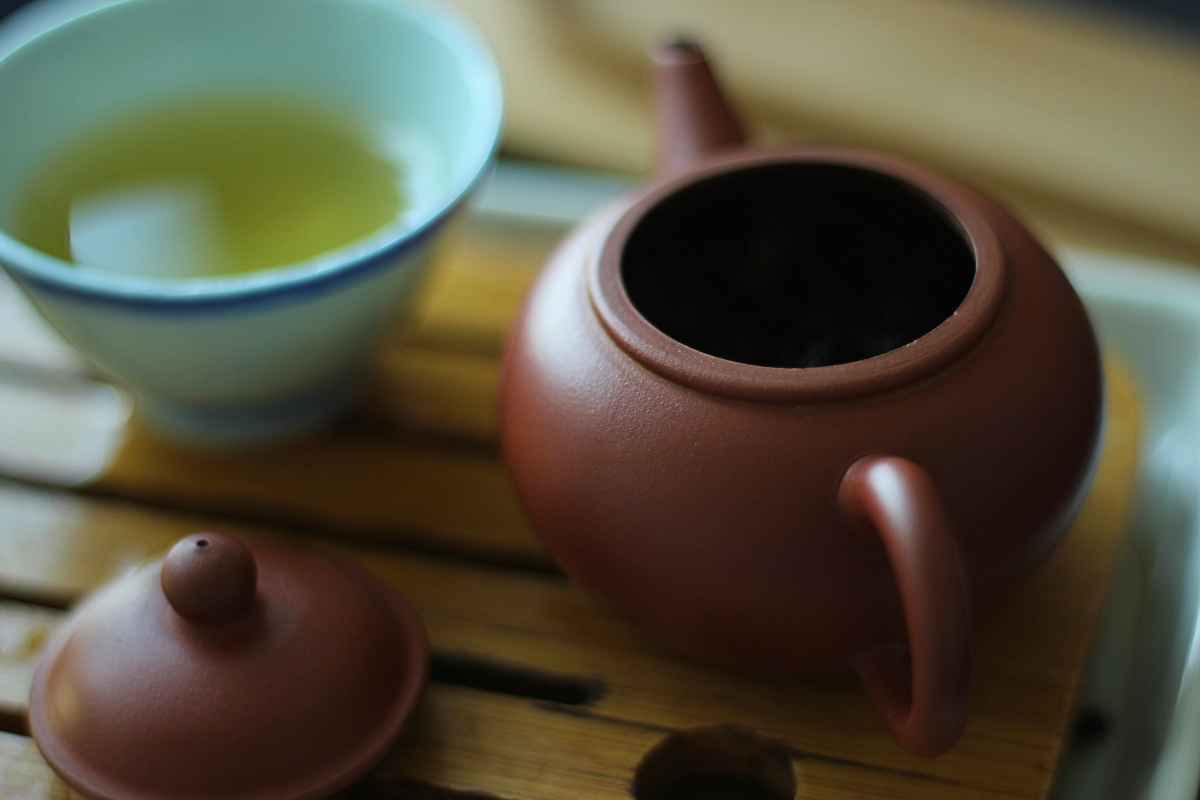Cleaning out a tea cabinet is the perfect way to (re)discover teas. During the monthly reorganisation, I came across a sample from Nio Teas that I got a few months ago. I decided to brew it right away so today’s session was all about Japanese green tea; the Masuda YuDi Sencha to be exact.
Have you considered subscribing to Tea Adventures? You can enter your email address in the sidebar and get updates whenever I publish a new article. You never have to miss an article again by joining our mailing list.
Masuda YuDi Sencha
The Masuda YuDi Sencha is a green tea from the Masudaen farm in Shizuoka prefecture in Japan. This company has been producing tea since 1870, which is quite a long time! In addition to this, the tea is supposed to be organic, which is always a nice bonus. It’s a sencha tea and sencha is the most popular type of Japanese green tea. If you want to know more about sencha tea, you can click here to go to an article that I wrote a while ago. In that article, I try to explain what sencha is exactly and where it comes from.
The dry leaves have a darker green colour with some lighter tints. You can see the typical needle shape of Japanese green teas. The aroma is a grassy sweetness and just smelling these leaves makes your mouth water.
The colour of the wet leaves is a lighter green. I’m quite surprised that the leaves are so small. It mostly consists of small leaves and a large one here and there. The aroma is mainly grassy and green and there is also a sweet nuttiness going on.
Tea Tasting
- Water 70°C
- 3.5g for a 150ml Tokoname Kyusu
- No rinse or preheating
- 3 infusions (60 – 30 – 45)
Don’t know where to buy tea online in Europe? I made a list of over 80 online shops and I keep updating it regularly. You can check it over here.
Infusions
Infusion 1 (60 sec): the aroma of this infusion is really grassy. It gives the impression of a dominant grassiness in the flavours. This wasn’t the case as the infusion (and especially the aftertaste) was really sweet. I’m getting a very subtle grassy undertone but this gives it a nice edge. The colour is a vibrant green/yellow.
Infusion 2 (30 sec): this infusion is a darker kind of green. The sweetness is less at the forefront and the aftertaste has a bit of a bite to it. There is a mixture of grassy notes and the sweetness from the first infusion. It’s not your usual fresh and verdant green tea but it’s really warming.
Infusion 3 (45 sec): the grassiness is gone again and it’s much sweeter, even though it’s a subtle sweetness. There are almost no traces of the grassiness from earlier. I’m even picking up a light nuttiness. No big changes in colour
Conclusion
In short, this was a good session. The tea had a grassy undertone but it was mainly dominated by a warming sweetness. It was nothing extraordinary but perfect as an everyday green tea. If you like a subtle grassiness and sweetness in your Japanese green, you could try this one.
If you want to try this warming tea for yourself, you can buy it here.




